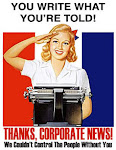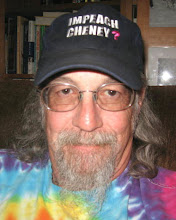By Sheila Parks
Tikkun
Monday 10 April 2006
The right to vote, as well as the principle of "one person, one vote," are cornerstones of our democracy. The anti-slavery, women's suffrage, and civil rights movements as well as the expansion of voting to young people are all part of the history of electoral reform in this country. Equally fundamental is the assurance that each voter knows that her or his vote counts and is counted as intended. At this time in our history, many have lost confidence in our voting system.
The presidential elections of 2000 and 2004, and at least six contests in the mid-term elections of 2002, raised many questions about fraud and electronic voting machines. The Help America Vote Act (HAVA) of 2002, the U.S. Election Assistance Commission (EAC) established by HAVA, and the Carter-Baker National Commission on Federal Election Reform, were all created after the 2000 election to improve the electoral process. All of these efforts, however, have been detrimental to the prevention and detection of election fraud and error due to their advocacy of the use of electronic voting machines. One election reform advocate, Bev Harris of Black Box Voting, provides a particularly vivid glimpse into the scope of the problems associated with electronic voting machines. She notes that, at a special Texas meeting of the Carter-Baker Commission, "I asked a member of the Panel why they [the Commission] had not asked a single question about how hacks can be done. He said it is not necessary to understand how the system can be compromised in order to protect it."
The U.S. Government Accountability Office (GAO) in its nonpartisan September 2005 report on elections states in its conclusions: "Numerous recent studies and reports have highlighted problems with the security and reliability of electronic voting systems ... the concerns they raise have the potential to affect election outcomes."
Currently there is no government agency that regulates the voting machine industry in the United States. Roughly 80% of votes in the 2004 presidential election were cast and counted on machines manufactured by two private companies, Diebold and ES&S (Election Systems & Software, Inc.), both controlled by registered Republicans. There are two principal types of machines now in use: (1) touch-screens (DRE - Direct Response Electronic), on which no audit or recount is possible because they have no paper trail and (2) optical scans, which use paper ballots for the vote but are counted by central tabulators (particularly susceptible to fraud).
Although several bills currently pending in the U.S. House and Senate, introduced by both Republicans and Democrats, propose changes to electronic voting machines, as do HAVA, the EAC and the Carter-Baker Commission, none consider hand marked, hand counted paper ballots (HCPB) as a possible solution. Most of the proposed legislation advocates for what is variously called a voter verified paper audit trail (VVPAT), a voter verified paper trail (VVPT) or a voter verified paper ballot (VVPB). A discussion of the nuances between and among these systems is beyond the scope of this article, but all share a potential weakness - namely, there is no way to prevent hacking of electronic voting machines later in the process, whether a voter receives a record of how she or he voted and/or whether there is a paper trail in the machine. Mandated random audits of the vote raise the question of whether the audit will really be random and bring back flashes of Florida in 2000 and a long drawn out struggle. Will the Supreme Court again put a non-elected person in office as president of the United States?
Although much has been published on the Internet, the mainstream media have mostly chosen to ignore or dismiss the questions of fraud and error raised in relation to electronic voting machines. Notable exceptions are discussions by Keith Olbermann on MSNBC's "Countdown" and Mark Crispin Miller's article "None Dare Call It Stolen" in Harper's Magazine, in which he strongly suggests that the presidential election of 2004 was rigged, much of it by electronic voting machines.
HCPB are an alternative to the current widespread and increasing use of electronic voting machines. An HCPB system of voting has the following major advantages over electronic voting machines: (1) Counting of ballots is publicly done, observed and filmed by everyday citizens who are registered voters in the precinct where the counting takes place. (2) Security safeguards are much more easily built in to protect against tampering. (3) The cost is far less.
There have been two recent efforts to promote an HCPB system in the United States, and a third will take place later in 2006. In 2004, voting rights activists Sharona Merel, Kaen Renick, Ellen Theisen, and Kathleen Wynne proposed federal legislation for federal offices. In 2005, four voting rights activists (this writer and three members of CASE Ohio - John Burik, Phil Fry, and Dorri Steinhoff) began work on a protocol for HCPB. Some of this writing has been modified and is included in this paper in the specifics for HCPB. In November 2006, voting rights activist Joanne Karasak plans to promote a state constitutional amendment for HCPB in Ohio. There are 18 states where such constitutional amendments are possible.
The key elements of an HCPB system are as follows: (1) Electronic voting machines are not involved in this process in any way whatsoever. (2) Nothing used in an HCPB system is purchased from companies or vendors who have ties to partisan political groups or parties. (3) Each voter hand marks a sturdy paper ballot with a black felt pen provided at the precinct. (4) The counting process happens at each precinct immediately after the polls close. (5) Each ballot is hand counted by registered voters from that precinct in full view of other registered voters from that precinct. (6) The counting process is filmed. (7) A chain of custody of the ballots and ballot boxes is specified. (8) Ballot boxes are observed and filmed as they are opened and closed and move from place to place.
Three categories of registered voters are included in this process: the official counters, the official observers of the counters, and the public watchers of the counters and observers. The hand marked, paper ballots are hand counted in full view of the public in each precinct by a specified number of registered voters in that precinct - e.g., four, six or eight voters. Half of the counters will consist of one person from each party on the ballot, chosen by the party itself; the other half of the counters will consist of registered voters, chosen by lottery. The hand counting is obse?ved by the same number of registered voters (e.g., four, six or eight), and chosen in the same way as the counters. Counting is filmed by a video projection unit; a process will be set up to determine how the videotaping unit will be selected. The videotaping will be broadcast over closed-circuit TV and streamed over the Internet while the counting is happening. All watchers may also videotape and/or take photographs.
Each polling place must be arranged so that registered voters from that precinct (in addition to the above mentioned official observers) can easily watch the vote counting. These watchers are not to be confused with the observers of the counters. Watchers will include two registered voters from each party on the ballot, chosen by the party, and eight registered voters chosen by lottery. The polling place must be large enough to accommodate these numbers.
Even with all these safeguards in place, the chance for fraud still exists. Therefore, immediately after the first count, there will be a 100% hand counted audit of the vote, carried out in the same way as the first hand count, but in the audit, the observers will be the counters and the counters will be the observers.
Ballot boxes must be clearly marked and visible in plain view. Ballot boxes will be sealed and locked whenever they contain ballots and are not being actively used. Ballot boxes are secured from the beginning of voting until the end of counting by a chain of custody procedure. Ballot boxes never leave the precinct until after the vote is counted, audited and certified. Each time ballot boxes move from the physical control of or visual contact from one person to another, a duplicate record signed by all counters and observers must be made relinquishing and gaining control. There will be a documentation process wherein each ballot box will have a record of its handling from the beginning of the day to the end of counting. On the web site of computer science expert Professor Douglas W. Jones, there is a very clear and detailed protocol for "Ballot and Ballot Box Transportation" and "Ballot Storage."
The call to action now is: HCPB for all federal races in the 2008 elections. This would mean hand counting just 1-3 races (the president and vice president; your U.S. senator if s/he is up for re-election; your U.S. Representative). Yes, we would need two ballots, one for these races and one for all other contests and questions on the ballots. Canada already uses an HCPB system for its federal races. Various states and municipalities already have protocols for HCPB, and one has been presented in this paper. These could easily be adapted from one jurisdiction to another. Elections are governed by state rather than federal statutes (HAVA notwithstanding). According to electionline.org, a website that provides an ongoing analysis of election reform, "Each state strikes a unique balance in allocating responsibility for elections between state and local governments. A survey of all 50 states reveals a wide spectrum of power-sharing arrangements." There is a "Snapshot of the States" on pp. 11-14 of the Election Reform Briefing. When you begin this work, call your local Secretary of State and get the exact rules for your state.
It is time to make electronic voting machines a NIMBY (not in my back yard and not in anyone else's back yard either) issue. To begin a movement for HCPB, ordinary citizens, registered voters, must begin organizing door-to-door with their neighbors to petition their local election officers and demand HCPB in their city or town. Although organizing could also proceed on a state level, going municipality by municipality is a good way to start, depending on your state's laws.
--------
Sheila Parks, Ed.D. is a longtime activist/organizer. She has been working against electronic voting machines for four years. Please contact her to get involved with other election reform activists working for HCPB across the country.
Subscribe to:
Post Comments (Atom)





















No comments:
Post a Comment